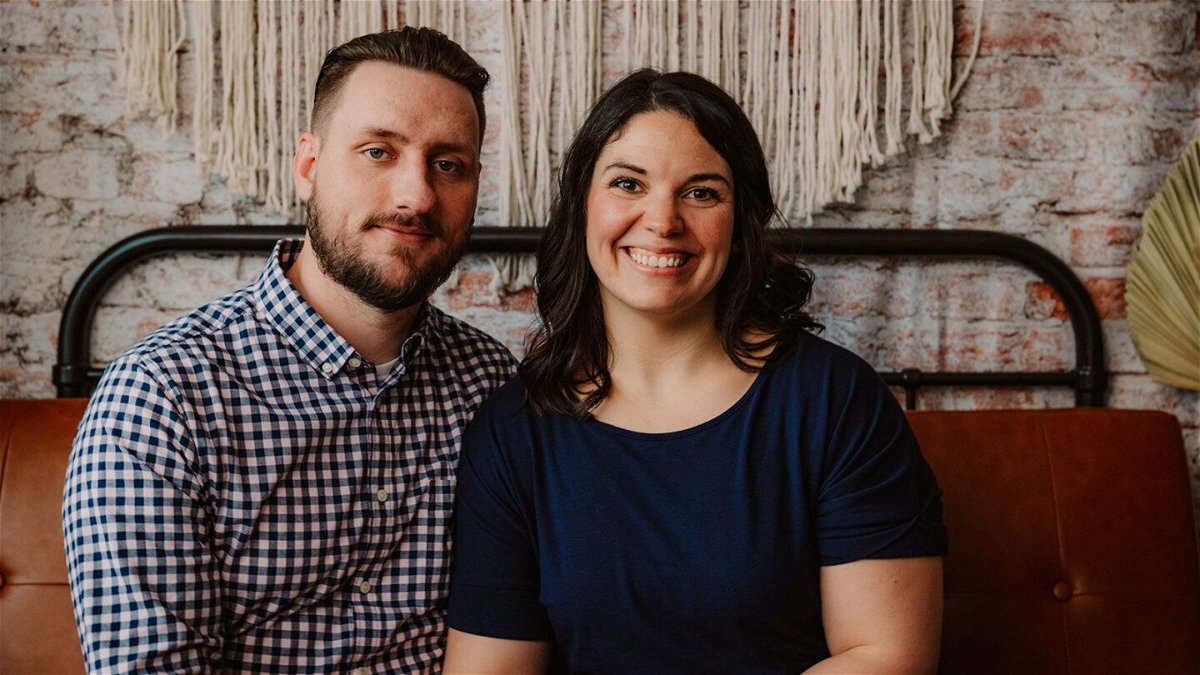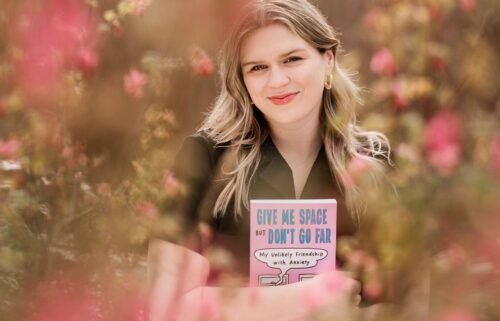An Alabama mom is pregnant in each of her two uteruses in an extremely rare case of twins

(CNN) — Kelsey Hatcher’s fourth pregnancy started like most others: with a missed period.
From there, a home pregnancy test turned positive, and she shared the news with her husband, Caleb, who has always been “the greatest encourager.” The Hatchers, who live in Dora, Alabama, thought they were done with middle-of-the night feedings after their youngest was born in 2021.
“When I told him I was pregnant again, he’s like, ‘OK, well, what’s one more? It’ll be great. It’ll be fine,’ ” she said.
At her first ultrasound appointment, about eight weeks into her pregnancy, things took an unexpected turn.
The ultrasound technician quickly found the baby and told Hatcher everything looked perfect. The baby was healthy.
Then Hatcher remembered to tell the tech that her anatomy was a little different. She was born with two uteruses, a condition called uterine didelphys.
“So if you’re scanning and maybe catch a glimpse of it or something, don’t think it’s just something random or there’s something wrong. There is a totally separate uterus there,” said Hatcher, 32.
Hatcher said the ultrasound tech thanked her for letting her know and said she would just take a quick peek at the second uterus to make sure everything looked good.
“And as soon as she moved the ultrasound wand over to the other side of my belly, I said, ‘Oh, my gosh! There’s another one.’ “
Lottery jackpot is more likely
Hatcher didn’t even need to be told there was another baby. She could see it herself.
“The nurse practitioner that I met with that day, she was just blown away. She said, ‘I’m not even sure what the statistics of this are,’ ” Hatcher recalled.
The odds are mind-boggling. About 3.6 million babies were born in the US last year, but only about 114,000 of those births were twins, according to the US Centers for Disease Control and Prevention.
In other words, about three sets of twins are born for every 200 live births, according to the CDC, and two of those sets are likely to be fraternal, which means they come from two separate fertilized eggs.
Hatcher’s condition is rare, too: About 1 in 2,000 women is born with uterine didelphys.
In order for her to become pregnant in both of her uteruses at the same time, two eggs had to be fertilized, one in each uterus.
Like most women, Hatcher has two ovaries, the glands that store and release eggs. Each of her ovaries feeds a single uterus. Typically, ovaries take turns releasing eggs, sending one into the uterus each cycle for a chance at being fertilized. Occasionally, however, an ovary may release more than one egg during each cycle, a phenomenon called hyperovulation.
Hyperovulation hasn’t been extensively researched, but one 2006 study of 500 women found that about 1 in 5 of them was able to hyperovulate. But even for those women, it doesn’t happen each cycle. When it does, sometimes a single ovary may release two eggs. And even more infrequently, both ovaries will release a single egg at the same time, which is what happened in Hatcher’s case.
Case studies estimate the chances of pregnancy like this – a woman with two uteruses carrying a baby in each one at the same time – at around 1 in 2 billion in the general population, though it’s impossible to know for sure with something this infrequent.
Hatcher was about seven times more likely to win a Powerball jackpot and about 131,000 times more likely to get hit by lightning at some point in her life.
Double baby bumps
Uterine didelphys happens in the first weeks of a baby’s development. Females are born with two uterine horns, or halves, that normally fuse to form one larger cavity. With didelphys, the uterine walls don’t fuse as they should, and women are born with two.
Hatcher says she got lucky, in a way, because some women with uterine didelphys have only one working uterus; the other can’t support a pregnancy. But her medical records show that she has carried babies in both of hers, just never before at the same time.
Even her doctors are playing it by ear.
“Even in medical school, we don’t really learn about this because this is such a rare thing,” said Dr. Shweta Patel, who is Hatcher’s obstetrician at the University of Alabama at Birmingham.
“Because it’s such an unusual circumstance, we did not have as much guidance for her prenatal care,” Patel said. “We know a lot about how to take care of twin pregnancies in general when there’s one uterus involved, and so extrapolating the patient care for that is what we’ve been doing for Kelsey.”
Both babies are girls, and they are growing well. At 34 weeks gestation, they are right on track, Hatcher says.
One thing that’s different with this pregnancy, Hatcher says, is that in certain positions, she has not just one baby bump but two.
When she lies in her recliner in the evening, “the girls will separate, almost, and you can see vividly the two separate wombs, because there’s a big gap in my stomach where they fall to one side or the other.”
The babies are technically twins, but because they don’t share a womb and can’t touch each other, Hatcher has wondered whether they’ll have a bond as some other twins do.
“I’m very curious to see how they turn out, as if they’ll have any type of connection like that or if they’ll just be siblings,” she said.
Her due date is Christmas, but Hatcher knows it’s not likely that she’ll make it that far, since being pregnant with multiples makes preterm birth more likely.
“I’ve moreso just wanted to make it to December,” she said.
Birth is the biggest unknown
Hatcher wants to have a vaginal birth, but with two uteruses, it’s unclear how labor and delivery will play out.
“I think birth is probably the biggest unknown,” Patel said.
The medical team isn’t sure whether both uteruses will begin contracting at the same time or whether the babies will be born separately. Perhaps one side will go into labor, but the other doesn’t, so they might have to induce labor on that side with hormones. Maybe Hatcher will need a c-section. “We won’t know until we see it,” Patel said.
In the meantime, Hatcher and her husband have their bags packed, and she’s trying to work as much as possible – she’s a massage therapist – because they need the income. Friends have started a GoFundMe page to help with unexpected expenses, including home renovations, child care and missed income after the twins are born.
“Things could go really quickly, and I could go into labor tonight,” Hatcher said. “Or it could take a little while. We’re prepared. We’re ready for at any point. Whenever it happens, it happens.”
One thing they have not yet figured out are the girls’ names. Their other three children, two girls and a boy, ages 6, 4 and 2, all have names that start with the letter R, and Hatcher says they plan to stick with that for the twins. Beyond that, nothing is settled.
Her son was a little upset at first when he found out that both babies were girls, but now he’s getting excited about being a big brother.
She says the rareness of this pregnancy makes it all the more meaningful to them.
“There’s no denying the miracle in these babies and knowing that they are here for something great, because for all of that to line up perfectly and it to happen the way that it has, you can’t question that, you know?”
The-CNN-Wire
™ & © 2023 Cable News Network, Inc., a Warner Bros. Discovery Company. All rights reserved.


